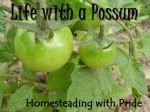main |
sidebar



Hello! It's that time of the week again! This week's herb is also a well-known one, although it is mainly known for its scent, it is one of the most versatile herbs in the world: Lavender.
Lavender is, like basil, a member of the mint family. It's native range extends from the Mediterranean region south to northern Africa and west and south as far as India. It comes in many forms, from herb to shrub, from annual to biannual to perennial. there are approximately 39 species of lavender, and, since they cross-pollinate so regularly, literally hundreds of hybrids and variations. The two most common lavenders are "English Lavender" or 'true lavender", Lavandula angustifolia, and "Spanish Lavender", or L. stoechas. English lavender produces the lavender essential oil that is so valued. Spanish lavender is mainly used as an ornamental shrub in landscaping.
Welcome to Herbs and Spice! Two things have always fascinated me: herbs and spices, and cooking. I'm always looking for new ways to use the herbs from my garden(and other people's), and forever trying and testing new recipes. So sharing my loves of all things garden and kitchen seemed to be the natural thing to do. I hope my blog will inspire you in your own garden or kitchen, so enjoy!
Follow Me!

Blog Archive
-
▼
2010
(40)
-
▼
June
(25)
- What to do about the Home Office?
- Homemade Peanut Butter
- Hangovers without drinking-WHUT?
- Herb of the Week: Oregano
- The Real World Called.....
- Jelly of the Day-Lavender Lemon
- Plum Jelly - Attempt 1
- Pitchers Galore!
- Herb of the Week: Lavender
- Fun With Flowers
- I'm In A Jam, So Let's Talk About Vegetable Contai...
- New Furniture & Wishful Thinking
- I AM really sorry!
- Herb of the Week: Basil
- A Gardener's Worst Nightmare & Visits with Old Fri...
- Underappreciated Husbands
- Eggplant is ALWAYS better with random pics....
- The Great McCaw Household Bedtime Bonanza!
- Verses For Sunday
- You Know It's Bad When You're Too Broke To Yard Sa...
- Jelly Success!
- Cookies on the Brain....Biscotti Brain!
- Experiments from the Garden & All New Recipe of th...
- The Great Measuring Cup Dilemma
- Welcome to Herbs & Spice & Everything Nice
-
▼
June
(25)

Get Your Widget!

Thursday, June 17, 2010
Hello! It's that time of the week again! This week's herb is also a well-known one, although it is mainly known for its scent, it is one of the most versatile herbs in the world: Lavender.
Lavender is, like basil, a member of the mint family. It's native range extends from the Mediterranean region south to northern Africa and west and south as far as India. It comes in many forms, from herb to shrub, from annual to biannual to perennial. there are approximately 39 species of lavender, and, since they cross-pollinate so regularly, literally hundreds of hybrids and variations. The two most common lavenders are "English Lavender" or 'true lavender", Lavandula angustifolia, and "Spanish Lavender", or L. stoechas. English lavender produces the lavender essential oil that is so valued. Spanish lavender is mainly used as an ornamental shrub in landscaping.
As I mentioned above, lavender is mainly known for it's strong, clean floral scent. Lavender essential oil has many, many uses. It is used in soaps and shampoos, perfumes, potpourris and sachets, home fragrance products, and cleaners.
The essential oil is also a wonderful green cleaner. It is strongly antibiotic, antiseptic, and anti-fungal. It also repels insects such as mosquitoes, roaches, silverfish and closet moths. A mixture of lavender oil and water can be used in a spray bottle much as you would use a bottle of Febreze, to freshen both fabrics and the air. It will actually kill odor causing bacteria in the air and fabrics. A little oil on a soft dishrag thrown in the dryer will soften and freshen your laundry. I regularly use a mix of lavender oil and water as an all purpose cleaner in my house. Crushed dried lavender can also be sprinkled on mattresses under the mattress pad to both impart a fresh scent to your linens and repel bedbugs.
Lavender also has an amazing number of medicinal uses as well. A cloth dipped in a lavender infusion and placed on the forehead can relieve headaches. It has also been used historically for it's calming, relaxing effects, soothing nervous tension and stress. Lavender essential oil is also an anti-inflammatory, and can be used as a wash or poultice for strains and sprains or arthritis pain. In WWI, due to it's antiseptic qualities, English hospitals used lavender infusions to disinfect the walls and floors. In addition, lavender is known to be a pain reliever, and can also help relieve respiratory problems and improve blood circulation. It can also be useful in treating urinary tract infections, stimulating urine flow and reducing the associated cramping.
Photo Credit: Jill Mead
As with many other herbs that have extensive medical properties, there are also risks associated with the use of lavender medicinally. It can be a skin irritant to some people, causing rashes. Pregnant women are advised against using lavender internally, as some of the volatile components in the oil can be toxic to a baby in-vitro. It is also recommended that persons with diabetes not use lavender medicinally.
And finally, lavender is a surprisingly useful culinary herb. It can be used in both sweet and savory dishes. Perhaps the most famous use of lavender for culinary purposes is in the traditional French blend called Herbes de Provence (savory, lavender, fennel, thyme flowers, rosemary and basil). However, lavender can be used in many other ways. It is becoming increasingly popular as a flavoring for sweets, and lends itself particularly well to delicate confections, such as scones, tea cookies or meringues. It also makes a particularly delicate floral jelly with a lovely rosy pink color. Lavender also pairs surprisingly well with many meats, such as chicken and beef. It can give a lovely subtle floral taste to risotto, and adds a surprising taste to spring salads. I have had French toast with lavender syrup, which was heavenly, and I have also had lavender-infused homey and sugar.
All in all, lavender is one of the most widely used herbs in history. It is my absolute favorite, and I use it for cleaning, medicinally, as a perfume, and in my cooking. Go explore this versatile herb and it's many uses for yourself.
Subscribe to:
Post Comments (Atom)
About Me
Blogs I LOVE:
Recent Reading List
- A Salty Piece Of Land by Jimmy Buffett
- Shogun by James Clavell
- Jane Eyre by Jane Austen(again)
- Swiss Family Robinson by Johann Weiss(the REAL, unabridged version)
- The Ambassador's Women by Catherine Gaskin
- Pigs In Heaven by Barbara Kingsolver
- Still Life With Woodpecker by Tom Robbins(again)
Favorite Links
Template Design by SkinCorner |Grunged Girl Image from Dapino-Graphics













1 comments:
Nice post! Very informative.
Post a Comment